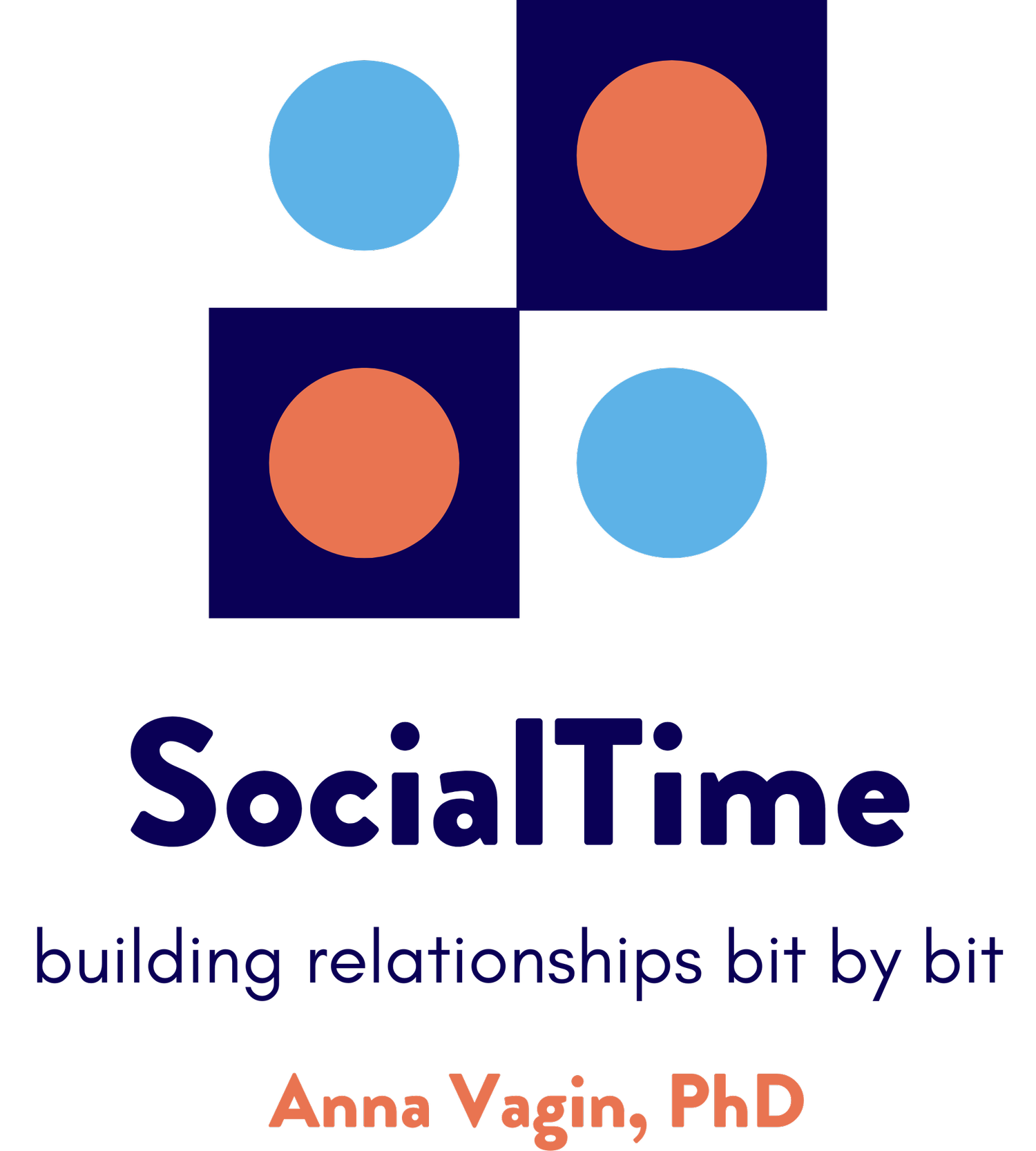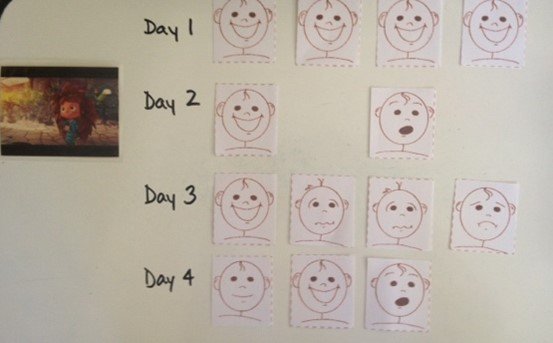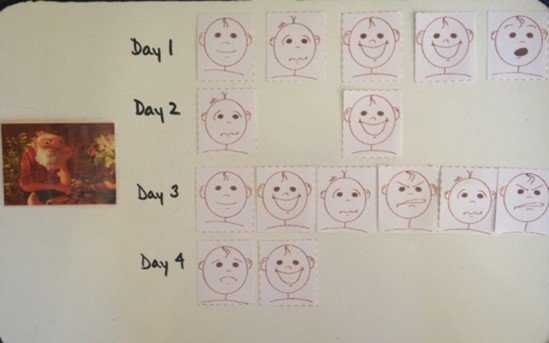Feelings are always changing…
Student work using the YouTube video: "Monsterbox" by L. Gavillet, D. Kocaurlu, L. Hudson & C. Jean-Saunier.
Tracking the feelings of both characters over the four scenes of the video. This student really worked hard to differentiate "mad", "sad", and "scared". Using the pause and rewind buttons really helped!
I am driving to work. It's a beautiful day, traffic is in my favor, my hair looks on the better side of okay, I have some great groups to look forward to - it's all good and I am feeling happy, optimistic, determined, grateful and enthusiastic.
By the next block, things have shifted. I remember I left clothes in the dryer that will be wrinkled by the time I get home, sniffle with my allergies, hit a red light, realize I forgot to send in a school form. In the blink of an eye, I am feeling frustrated, ticked off, annoyed and discouraged. Aaaaarghhhhh! WHAT HAPPENED?!?!?!?
Unfortunately, life happened. Human feelings happened. And the thing about feelings, is, that they are always changing. We rarely stay in one feeling state for any length of time. While emotion transitions aren't always as dramatic as I described on my way to work, our gradations of feelings are always shifting and fluxing.
Many students with social learning differences benefit from work on emotions. As we work on feelings, we need to remember to include work on tracking changes in feelings. After all, students' feelings are often changing and shifting, so we want them to grow their comfort level with that "fact of life". A great way to ease students into this work is with material from animated videos, especially since videos portray these moments of change. We can watch a character's facial expression change from "happy" to "sad" to "frustrated" over the course of a few moments.
We can help students practice tracking the feelings of one character, or make things more challenging by tracking two characters throughout the course of a storyline. Using videos allows us to pause to examine a facial expression in more detail, or replay part of a scene to review how it unfolded. We can use emotion labels or pictures (like in the above illustrations). We can provide students with lists of feelings from which to choose - resulting in interesting discussion as students work to define and differentiate "irritated" from "frustrated". We can review examples of when a character feels more than one feeling at the same time. Carefully selected animated videos provide us with engaging material to support social emotional development.
Whether you experiment with "Monsterbox", the video we used above, or a simpler, one character video like "Ormie the Pig", I think you will be impressed with the richness of the material. Many of you have written me loving the Maca & Roni Spreadsheet. If you love working with great animations as much as I do, consider adding it to your therapy materials - downloading is easy, and there's no shipping!


